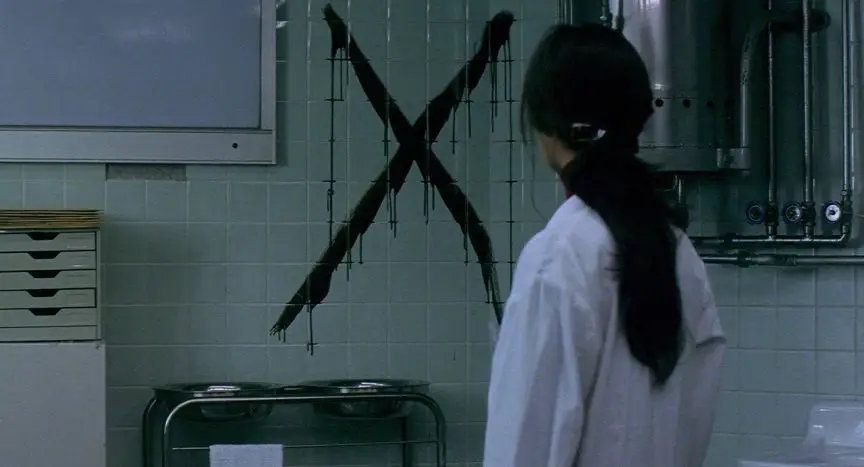Japanese horror boomed in the late `90s and early `00s. Takashi Miike’s profoundly disturbing take on romantic comedies, Audition, came out in 1999 and no one who’s seen it has looked at piano wire the same way since. Hideo Nakata’s Ringu preceded that film by one year, and inspired many of the supernatural horror movies and their American remakes (Ju-On, Miike’s One Missed Call, Pulse, and so many others) that are collectively referred to as J-horror. Kiyoshi Kurosawa’s Cure preceded both in 1997, and combined the grisly murders with a possibly supernatural storyline.
Cure’s main character, Detective Kenichi Takabe (Kōji Yakusho), is investigating a series of murders where the victims have an X carved into their necks. Despite the similar M.O., none of the victims were killed by the same person. Even worse, the murderers don’t remember committing their crimes, despite slaying someone close to them. Takabe and a psychologist assigned to help him with this case, Makoto Sakuma (Tsuyoshi Ujiki), are stumped.
The frustrations of the stymied investigation carry over into Takabe’s personal life. His wife, Fumie Takabe (Anna Nakagawa), has an unspecified mental ailment that makes her forget as well, mirroring the murderers that Takabe is interrogating throughout his days.

The audience meets the man who may be responsible for the killings, Kunio Mamiya (Masato Hagiwara), long before the investigators. He’s introduced as a stranger meeting another man on the beach. Mamiya displays signs of amnesia (though Cure never reveals if his memory loss is real or an affectation), then mesmerizes the man he met so he’ll kill his wife and carve an X into her neck.
That murder takes place off screen, instead audiences are shown the murderer throwing himself out a window. The defenestration is portrayed as much of the violence in the film. The camera is far off, which makes the jump feel detached, but oddly, more real. There’s no music in this moment, which pushes audiences further from the characters, almost as if Cure were a documentary. Nothing builds toward the jump. All of this works together to make all of the murders in Cure feel abrupt and pointless.
With almost no music outside of the film’s open and close, Cure is a quiet affair punctuated with loud moments. There’s the obvious in the shocking murders, but also in Kōji Yakusho’s masterful performance. Takabe is a man on the edge, unable to contain the frustration from his work at home or the frustration from his home at work. He’s stoic until it all boils over, then he’s throwing things, punching walls, and beating his coworkers. His inability to find healthy emotional outlets leads to the film’s excellent, dark ending.
Did You Know? Wicked Horror TV Has Classic and Independent Horror Films Available to Stream for Free!

Without giving too much away, the final moments of Cure leave audiences wondering for long after the lights turn back on. Was there something supernatural happening? And is Takabe now a part of it?
Criterion, as always, does an excellent job with the extras. The film’s cinematographer Tokusho Kikumura oversaw the 4k restoration process and the film has an uncompressed stereo soundtrack. There’s an insightful essay from film critic Chris Fujiwara as well as four interviews, one with the film’s lead Kōji Yakusho, one with his foil Masato Hagiwara, and two with director/writer Kiyoshi Kurosawa. The most exciting interview is one with Kurosawa in conversation with his former student, the director of the first Japanese film nominated for Best Picture at the Academy Awards Drive My Car, Ryusuke Hamaguchi. Each of these conversations illuminate Kurosawa’s process and are must-see for aspiring filmmakers. Watching him talk about his process after hearing the actors (who both describe him to be an almost hypnotic figure) is fascinating.
This new blu-ray of Cure will be available on October 18, 2022.

